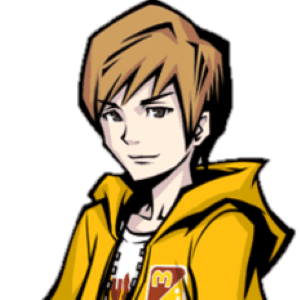Within the market space of free-to-play gaming, one of the most meteoric rises of the past five years has undoubtedly been gacha games. This particular brand of freemium entertainment has had a fairly lengthy history coinciding with the rise of mobile gaming, although it was definitely concentrated more so among spin-offs for existing IPs (Fire Emblem and Fate/ come to mind as the most popular ones). That all changed, however, when Genshin Impact hit the scene at the perfect time, igniting a whole new market for original games centered around randomized asset collection. The creators of Genshin even expanded their own share of this market with today’s title, and I thought it would be a perfect time to dive deep into this fast-growing genre with a long-term study. To understand the live service gacha game, I became the live service gacha gamer, and one year after its original release I am ready to give the full findings of my survey! (Please note that the PC version was used for this review, and that as of writing the most recent version of the game is 2.2.)
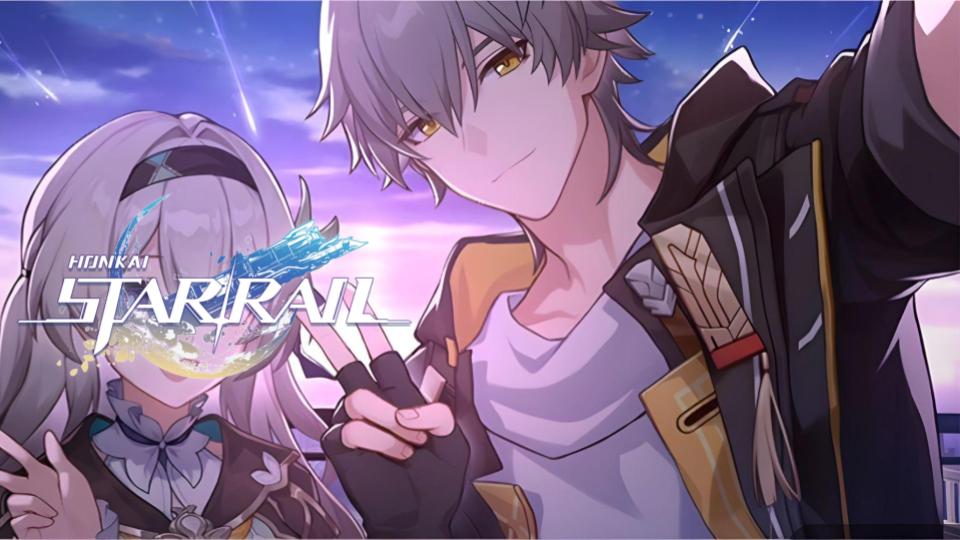
Developed and published by miHoYo (worldwide called HoYoverse) and released on April 26th of 2023, Honkai: Star Rail is a playable space-fantasy fashion show available on mobile devices, PC, and PS5. Its premise involves a living weapon who boards a spacefaring train and travels about the universe with its motley crew to protect various worlds from disasters. Players interact with the game by exploring various zones, participating in turn-based combat, collecting various materials to upgrade their party, and reading and watching the story as they go along.
The story of Honkai: Star Rail takes place in a fantastical space setting and follows the tale of The Trailblazer. The Trailblazer is technically a player avatar which you pick the sex and name of, but “The Trailblazer” is such a mouthful, so I’m going to use the default name of the male version, Caelus. Anyways, Caelus’ story begins when he awakens aboard the Herta Space Station thanks to a pair of terrorists placing an dangerous object known as a Stellaron into his body. There isn’t much time to contemplate though, as the station is being attacked by an army of interstellar invaders called the Antimatter Legion. Thanks to the help of the crew of the Astral Express, Caelus successfully navigates the crisis. After driving back the invaders, Caelus boards the Astral Express and embarks upon a journey to discover who he really is and to aid the crew in their various misadventures. This serves as a basic overview of the game’s setup, but in reality there is a LOT of technical terminology and concepts which underpin most of the game’s story. Oddly enough the game’s story is more interested in exploring these concepts rather than actually pushing Caelus’ mystery forward. Within the first few hours of the game it introduces things like the Paths, the Aeons, Stellarons, and a whole lot more, and its main protagonist gets pushed into the background to make space for it all. In that sense it’s better to think of Honkai: Star Rail’s narrative as an episodic affair about traveling to different planets and exploring philosophical ideas embodied by the people they meet, the planets they live on, and the pseudo-gods that watch over everything. With that in mind I think the best way to examine the story is to judge each major planet as an individual arc, then bring it all together to determine a general appraisal of quality.
The game leads with its best foot forward by starting with the story of Jarilo-VI, a planet ravaged by an eternal winter that is down to its final habitable city: Belobog. The main theme of this tale is “Preservation” and explores a setting where characters struggle between accelerating the conclusion of a tragic fate out of despair, or preserving ourselves for as long as we can, either unto the hope of a miracle that will change fate or towards a far more dignified acceptance of that fate. Its characters are engaging and understandable, and every event builds upon the last, all the way to a finale that is way more cathartic than any free-to-play gacha story has any right to be. And the fun didn’t stop there either, as the Patch 1.4 Continuance Quest featured a great story that brought us back to the world in a natural and clever way, though I better not spoil it for you.
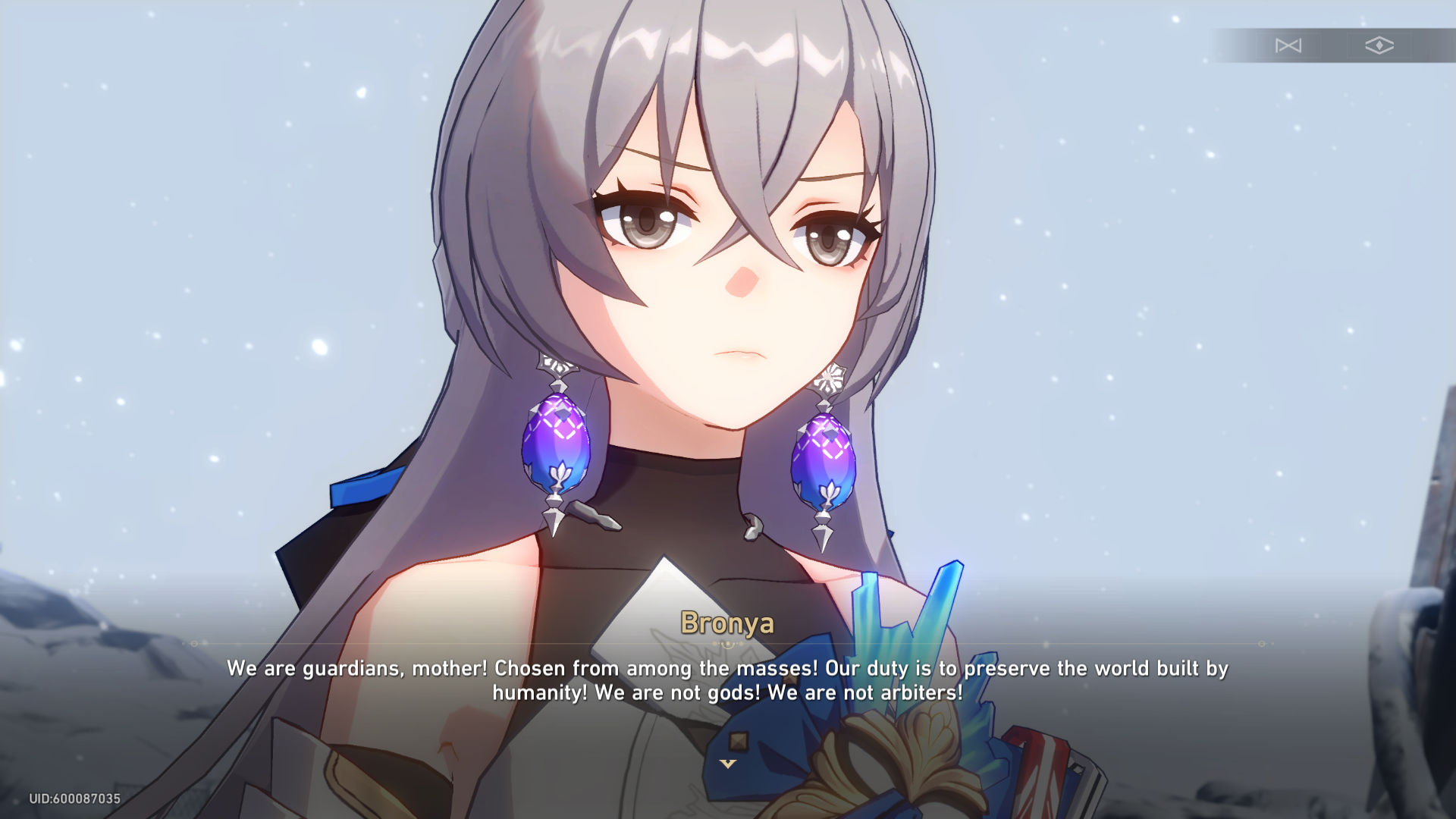
Sadly the game plunges you next into the story of the Xianzhou Luofu directly thereafter, and this is easily the weakest portion of the game. It takes place aboard a spaceship massive enough to house cities and ecosystems and tries to tell a tale about the dangers of seeking immortality full of intrigue and action alike. In practice however, it falls short in basically every way. Most of the story is just characters expositing information to you for way too long, and even after listening through all of it you’ll still probably be confused as to why you should care. Many plot threads are introduced and promptly resolved unsatisfyingly, and by the time the big climax came around I simply couldn’t invest myself in the events because of how unfocused the whole arc is. The Continuance Quest of Patch 1.5 did an ok job of trying to address some of these problems by giving many of the characters decent moments of reflection, but by then it was simply too late. We have already been promised a return to the Luofu, by which I assume the writers want to redeem this particular arc, but if it were up to me I’d cut my losses and focus on better parts of the game’s world.
As for the most recent story, it takes place on the former prison planet turned literal dreamworld of Penacony, and while an improvement upon the previous outing it still suffers from some major issues. Despite its engaging setting, the plot is way too predictable for what is supposed to be a mystery story. Many of its best cliffhangers are ultimately subverted in ways that waste a lot of potential and reduce previous twists to mere shock value. It doesn’t help that the story suffers from a severe case of secular brain rot. It thinks it’s being clever by making the character dripping in Christian aesthetics the final villain, when in reality so many stories have done that to the point where it would have been legitimately more subversive to NOT make him the villain (and they were SO close to having that be the case too, but backed out almost as soon as they suggested the idea!). The associated philosophical dialogue obscured in way too much flowery language did not help here either. Fun fact to all the writers in the room: clarity in philosophical discussion is a sign of intelligence, not simple-mindedness. The one saving grace with Penecony was its middle act where the character Aventurine basically took over as main character, as aside from a little trite nihilist existentialism his story and writing stands as some of the best stuff in the entire story. Overall I’d say the story of Honkai: Star Rail is a bit disappointing. While it proves early on that it has the capacity to tell great episodic stories, ultimately their track record has been more misses than hits. Hopefully in the future the game takes more lessons from its best planet and manages to surprise me, but I’m not holding my breath.
Moving along to the gameplay, Star Rail portions off its world into various explorable zones with treasures to find, puzzles to solve, and enemies to fight. Surprisingly when compared to most RPGs, the exploration treasures and puzzles are probably some of my favorite parts of the game. While some treasures are out in the open, some can be tucked away in clever corners of the map which makes searching for them all the more engaging. The puzzles are even better, because unlike other similar games they have a sense of progression in and of themselves. You solve a few simple versions of the game’s puzzles while on the main story to open up new areas and shortcuts, but the optional puzzles build upon those early ones to present genuine and satisfying challenges to overcome. Earlier puzzles like the ones on Belobog and the Xianzhou focus on moving parts within limitations while later ones on Penacony feature more perspective-based challenges, and all of them are fun diversions that enhance the variety of the game.
Combat in Star Rail is actually quite simple, probably a move in service to the mobile version of the game. It’s your classic turn-based system where characters and enemies take turns launching attacks and using abilities until only one side remains. There are also your typical gacha game mechanics like giving enemies elemental weaknesses to encourage building a variety of different characters. The most impactful mechanics are, hilariously enough, directly inspired by Falcom’s Trails series which I’ve covered extensively on this website. Turn order is governed by a speed stat on a timeline, and characters’ ultimate abilities count as interruption techniques to be used at any time just like S-Crafts! You think it is a coincidence that the gacha game to finally get me to make this case study was the one with a train in it?! Learning to master this initiative system is the most fun part about the game’s battles, and while I don’t think it’s for everyone I certainly enjoy finding ways to turn a sticky situation around with a well placed Gepard shield ult or Tingyun’s energy regen ult. One final note: many people criticized the game early on for having most characters only possess a basic attack, a skill, and an ultimate ability, and in some ways I can completely understand why people would find this decision needlessly restrictive. Personally I think the game wields the hyper-specialization of individual units to its favor when you think of your team of four characters as parts of a greater whole. Deciding who to include on your team is crucial to overcoming its toughest boss fights if they happen to have mechanics that stress your more comfy lineup, and in many ways I think this is a more engaging system than just making every character a silver bullet. In defense of the critics though, actually getting to the point where you can engage in fun team building like that is where the game’s biggest hurdle is, and leads directly to the heart of the discussions surrounding the gacha game genre.
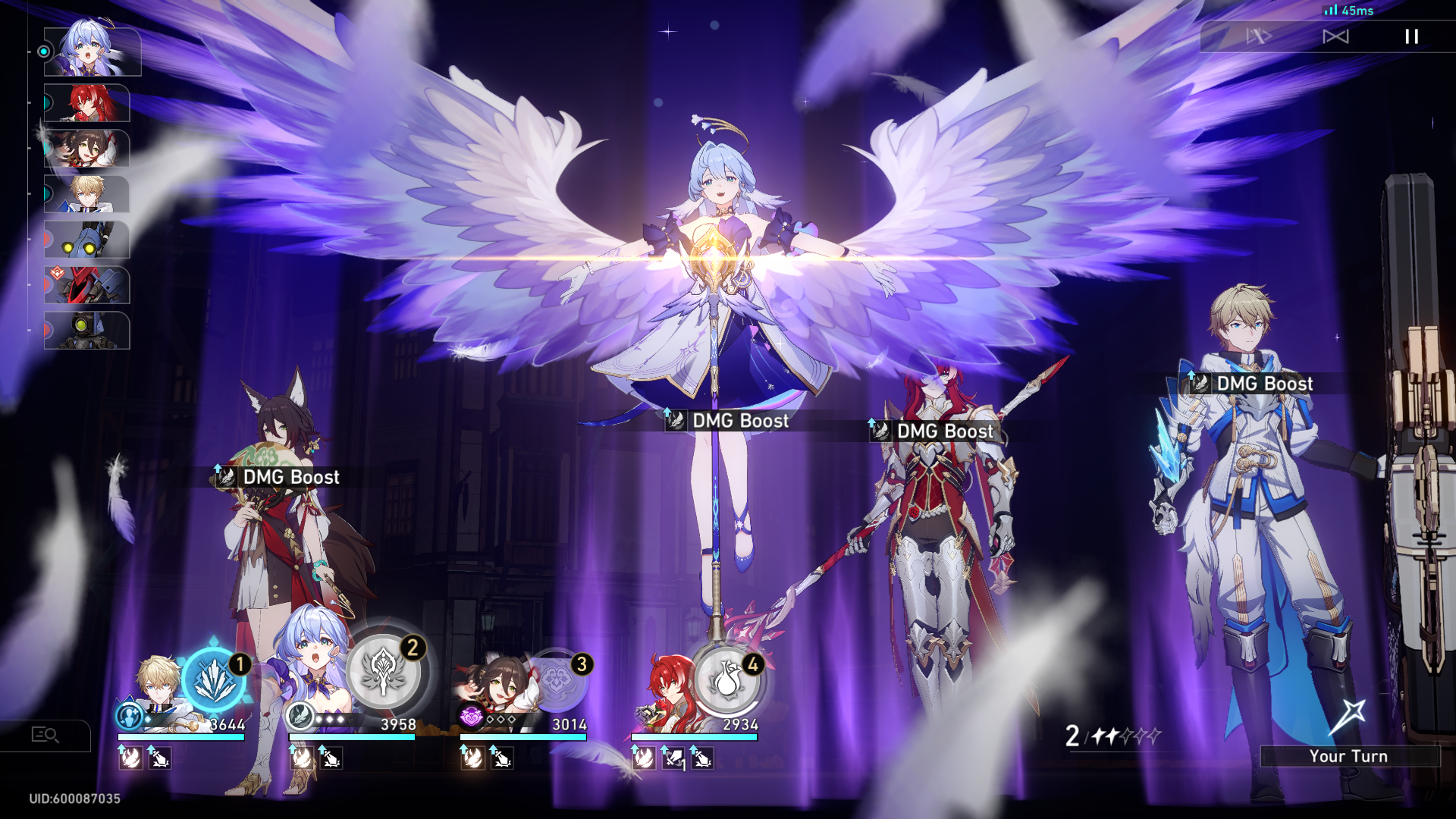
Getting a character up to speed in Honkai: Star Rail requires you to build your characters in four distinct areas: character level, Light Cone, Traces, and Relics. This wide spread of powerup areas wouldn’t be a problem in and of itself if they were centralized in terms of the materials needed, but in practice you have to dedicate time to farming a huge number of different items. Leveling a character alone requires a decent collection of experience books, credit currency, common enemy items, and elite enemy items, but it only builds up from there. Light Cones, aside from needing to actually obtain one you want to use from various activities in the game, require their own separate brand of experience ‘books’ in addition to swapping elite item cost for trace materials. Traces as the name implies primarily needs trace materials but also throws in the need to fight weekly bosses. And Relics work on their own leveling economy entirely, replete with RNG mechanics designed to frustrate and slow the player down if they have any interest in building optimally. Actually getting any one resource towards these various goals can actually be fun because they encourage you to continue engaging with the combat system in various different modes, and in a way they can be relaxing to farm once you know what you’re doing. My gripe however is that most of these systems are dumped on new players all at once, and it creates a needless barrier to entry which actively confuses and punishes players who are unwilling to spend time looking up guides online to learn how to approach it effectively. Beyond all of that the game features a daily energy system which limits the amount of stuff you can do in a given play session. While this system has been mercifully adjusted to be less covetous of the players’ time, that doesn’t change the fact that it can easily make building a character take multiple real-world days to actually be finished. When you do reach a point where you have enough complete builds to not have to stress over logging in every day to progress your party’s levels the game becomes much better, but getting to that point just feels bad and I don’t blame anyone for falling off the game before it truly gets good.
Of course nothing in the above paragraph really compares to the infamous gacha system itself, which is where you get most of your characters in the first place. Thanks to transparency laws we thankfully know a lot about the inner workings of the system and can subsequently predict and exploit it, but boy does it work you hard. When you put a Star Rail Pass into the gacha, you warp in one reward. Most of the time you just get a 3-star Light Cone, but every 10 pulls guarantees a 4-star character or Light Cone so it’s common practice to pull in sets of 10 to always get some tangibly exciting reward. 5-star items are extraordinarily rare at a less than 1 percent chance, but the rate increases around 70 pulls and is assured at 90 pulls with this ‘pity’ count resetting to zero when you get the 5-star item. Additionally when pulling on the Limited Warps, the 5-star item has a 50/50 chance of being either the featured character in question or one of the “standard” characters who don’t rotate in-and-out of availability, and if it’s the latter then your next 5-star item will be the featured one. On the whole this isn’t too bad for players who can overcome the temptations of FOMO and save their Warp Passes for months at a time for a character they really want (I would know), but for players who can’t help themselves this is potentially life-threatening.
Let’s assume that a new character banner drops with a character someone wants, and they just expended all of their pulls on the last banner but can’t be bothered to spend time saving up freely attainable warps and just wants to buy the character with real money. Assuming the absolute worst case scenario where the player must hit 90 warps to get the 5-star character and they lose the 50/50, totalling 180 waps in total, how much money does this cost? Well the maximum you can charge your account at one time is $99.99 for 8,080 Oneiric Shards (which you then convert into the actual warp resource Stellar Jades for legal reasons), and with each 10-pull being 1,600 Jades this brings us to a grand total of 50 warps per $100 (after rounding down). This means this unlucky player would spend $400 just to get one character, and keep in mind that they release new characters at a rate of one every three weeks! Obviously in practice you have to be extraordinarily unlucky for a situation like this to occur and to Star Rail’s credit they are considerably more generous than many gachas in terms of free rewards (the dedicated F2P player could get one 5-star per patch in theory), but the fact that we can theorize about this at all is a black mark to say the least. Personally the only time I spent money was for one $30 booster shot to help pass over the 300 Standard Warps threshold for the 5-star selector (yes, I rushed that many Warps in the first three weeks of the game’s life, 2023 was a weird year for me), and since then I have gotten plenty of enjoyment out of saving my pulls for characters I know I’ll like. But let me once again make it clear: this is NOT a game for the intemperate, and if this is a virtue you struggle with then I beg you to find something else.
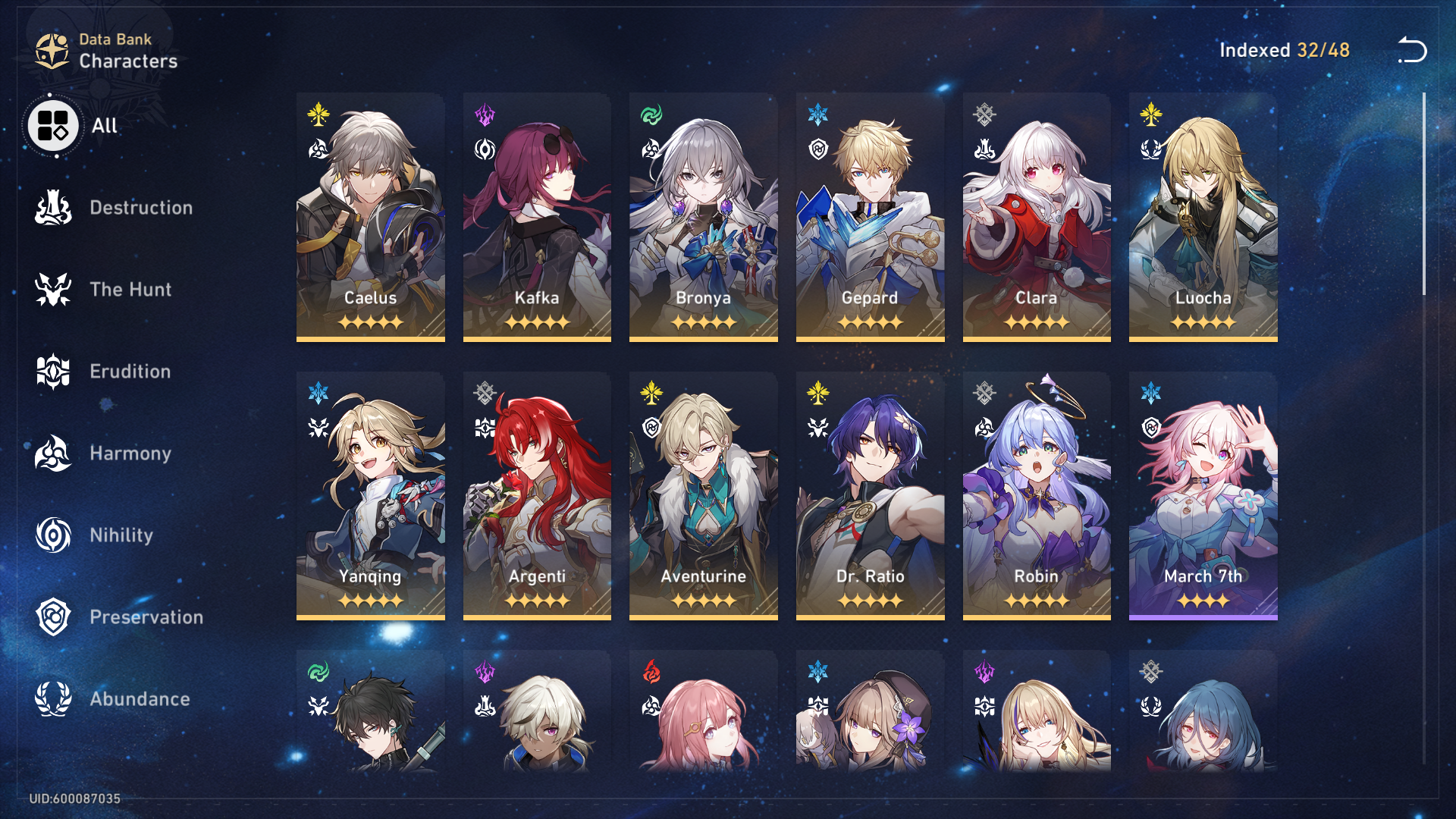
Before moving on I’d like to end my analysis of the gameplay with a quick discussion of the events system, because I could use something more positive to talk about. As live-service games are wont to do, Honkai: Star Rail brings a variety of events with each update that offer novel gameplay scenarios and bonus rewards. Each update usually features a uniquely combat-focused game mode that doesn’t stick around after the version ends, but offers a variety of playable trial characters to help you earn their goodies and give you a taste of those characters you’ve been skipping (you HAVE been skipping characters, right?). The real highlights though are the more involved events which often feature story updates for characters who didn’t make the main cast of the Trailblaze and Continuance quests. While some like the ghost-hunting squad still primarily focus on the core combat with special modifiers, you also have events like managing a commercial district with logistics puzzles, running a bar for monsters featuring a drink-mixing UI that is way too pretty for a side mode, and my personal favorite: a full-on miniature Pokemon-like campaign! Not only do these often leave more of an impression than the gameplay in the main story, but they are also permanently added to the game so that players in the future can continue to enjoy them (albeit with a few less rewards for clearing them). I definitely look forward to any patch with these involved side mode additions, and if you ever find yourself needing a break from saving the galaxy I highly recommend opening up one of these events.
Moving on to the presentation, this is easily where Star Rail has the most ducks in a row. Given its space-fantasy premise the game had a lot of promise in what kind of settings it can explore, and so far it has delivered on some great environments. Herta Space Station might be a little bit of a bland starter area, but everything else impresses. The frosty eastern European city of Belobog with its steam-punk influences is very nostalgic to me, though the Xianzhou Luofu’s Chinese futurism and Penacony’s art deco surrealist wonderland are not to be overlooked either. Unfortunately much of the game’s aesthetics are brought down by its need to be mobile-device compatible and has a few edges, but the strong art direction makes up for it. The hyper-colorful 3D anime look it goes for has far from a universal appeal, but it’s nothing if not easy on the eyes. What I think the visuals really nail though is cinematography, as in battles just about every attack animation of both enemies and allies are meticulously framed. It cannot be understated how hard some of these camera angles go, giving even mundane farming fights a dramatic presentation that’s just plain satisfying to watch.
If I had one truly enduring complaint about the game’s presentation it would be that some of the character designs are rather weak. The game and everything in it is in some sense an advertisement for the playable characters, so it makes sense that they would be designed with market appeal in mind. However as one can expect, this leaves many of the characters being rather puzzlingly designed when dwelled on. Perhaps the easiest example of this is Ruan Mei, whose design is universally agreed to be gorgeous but as a character it makes so little reference to her status as a biologist in the Genius Society that it comes across as vacuous. This criticism obviously applies heavily to many of the female characters but the men suffer from similar problems too, namely in the presence of random chest windows which are both bizarre and needlessly effeminate. Dr. Ratio is the one character upon whom it makes a modicum of sense due to his clear connections to ancient Greek statuary, but even then I still find it pretty dumb.
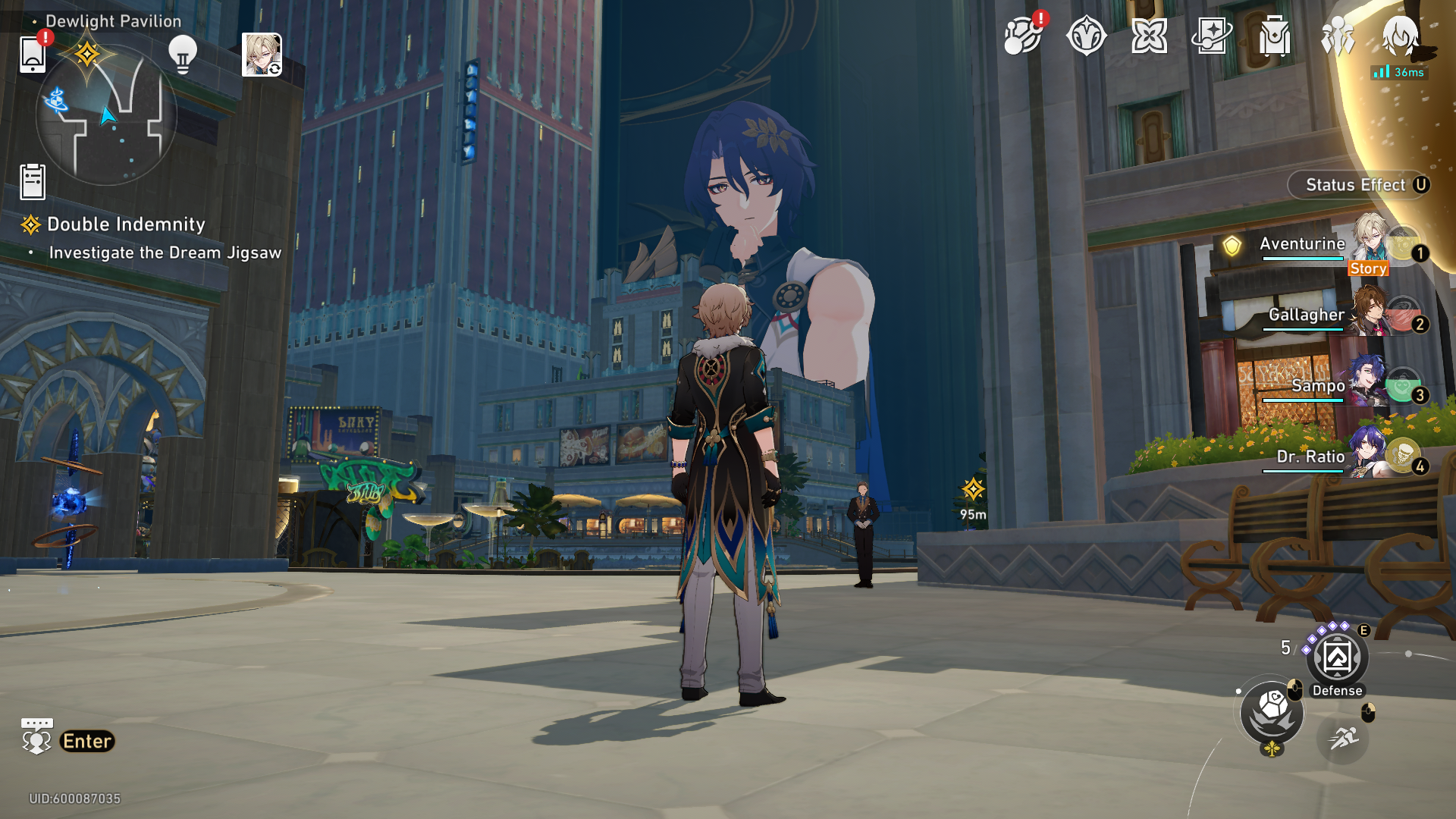
Honkai Star Rail’s soundtrack is relatively low key for the most part, something to be lightly acknowledged as you move about the environment, but stopping to pay attention to it reveals a rather captivating soundscape. There are a few songs which lean a little too heavily into electronic instruments for my taste, but most of them feature lovely melodies that stick with you long after putting the game down. Belobog’s Administrative District has a theme called Embers which perfectly captures the tone of the entire arc and becomes a strong leitmotif throughout the planet, Penacony leans into a wonderful jazz band style reminiscent of the era it draws inspiration from, and Argenti’s boss theme A Gentleman’s Fantasy is just… perfection. Of course I would be remiss if I were to neglect the game’s various vocal tracks which underpin its most climatic moments. Naturally I don’t want to say too much on these as they really deserve to be heard in their proper contexts but just as an example: Wildfire is so perfectly implemented into Belobog’s finale that it single handedly raised the bar of that story’s place on the narrative hierarchy, and at this point I don’t know how they will top it!
Lastly as for what wisdom can be drawn from Star Rail, like with the individual parts of the story itself, it varies wildly. But believe it or not each part of the story had things that made me reflect on spiritual matters. Starting with the story of Belobog- there was a very interesting detail regarding its climax where Caelus’ victory is credited to his faith in Preservation which allowed him to raise the mantle where others failed. Something about this resonated in me. In our day and age, people have this tendency to hold the failures of some within a group to the whole of their number and claim that those who betrayed their ideals are proof that those ideals are wrong, as I’m sure many of us have probably been chided for in keeping the Catholic faith. Contrary to what was presented in the game we mustn’t be afraid to confront the truth of those who failed, but on the other hand the game is correct in showing that oftentimes it is the person who fails the ideal and not the other way around. I admit I struggle greatly with how I am going to engage the world with the word of Jesus Christ when many traitors who claimed or still claim the same allegiance are all too often weaponized against truly entering into that conversation, but that scene on Everwinter Hill was a surprising reminder that any truly good belief can spark back into a blaze that can save the world, if we have the courage to let it burn in us as proof of its innate goodness.
The Xianzhou Luofu, as you might expect, was a little different. The story was so messy that I actually found myself critiquing its message given the metaphysics of Star Rail’s universe, which really helped me to appreciate those of our own. It’s intention to portray physical immortality as a plague with consequences beyond most peoples’ basic conception of it isn’t particularly wrong, but given the seeming lack of spiritual immortality in the setting (there may be something beyond death which certain characters have noted as something “red”, but the narrative is playing coy about what it could be) I had a strange realization that you can’t really blame the Denizens of Abundance for having a natural reaction to a universe of absolute final annihilation. The strain on the environment depicted in the Xianzhou storyline isn’t morally right for sure, but in many ways the eschatology of Star Rail’s universe reduces it to a kind of self-defense that I couldn’t help but sympathize with. In contrast it made me appreciate the reality of our home in Heaven which awaits us beyond the pale, which gives real, lasting weight to how we interact with the mortal world in the time we spend on it. I of course do not mean to say that Christianity is merely some profit-driven chase for eternity by this though, as true eternal life as understood by the Christian is an eternal union with God which is desirable in itself yet suggests a reciprocity that is far from mercenary. In the end I am reminded that the core of rejecting physical immortality (or at least, the immortality of this fallen existence of ours) lies in Our Lord’s declaration that “For he that will save his life, shall lose it: and he that shall lose his life for my sake, shall find it,” (St. Matthew 16:25, DR) and praise God that He should seek in His Love to preserve us even after the end of our story, in a way greater than any Aeon could offer.
Last in regards to Penacony’s tale, it actually manages to provide a fairly compelling reflection on escapism using the world of dreams as a framework. A large part of the experience in playing through Penacony is reflecting upon the sweet dream and musing on the tension between the happiness people indulge in the dream and the fact that they need to go back to reality eventually. While eventually it devolved somewhat into some very unfair implied comparisons to Heaven, overall I thought it did a good job exploring its central question of “Why does life slumber?” Admittedly I do find it a little rich of Star Rail to try and make platitudes about how it’s important not to dwell in dreams too much and face reality when it itself essentially invites players into a kind of dreamworld of its own which can demand as much time as it does, but a hypocritically presented argument can still be true independent of the hypocrisy. In our day and age the world is so plugged into this digital ‘dream’ we navigate through internet, social media, streaming, and yes even video games, and all things considered it would be a little scary to wake up and realize one day that we ‘slept’ through our chance to resolve those things in life we needed to the most. Obviously there’s inherently nothing wrong with finding rest in this ‘dream’ if we use it to prepare to face reality, but we must be reminded of our need to find strength through the trial of reality and all its discomforts. Don’t let life or The Lord catch up to you without your lantern lit! (For more information on how to use escapism in a healthy manner my editors have insisted on plugging J.R.R. Tolkien’s On Fairy Stories once again, and I for one agree with them.)
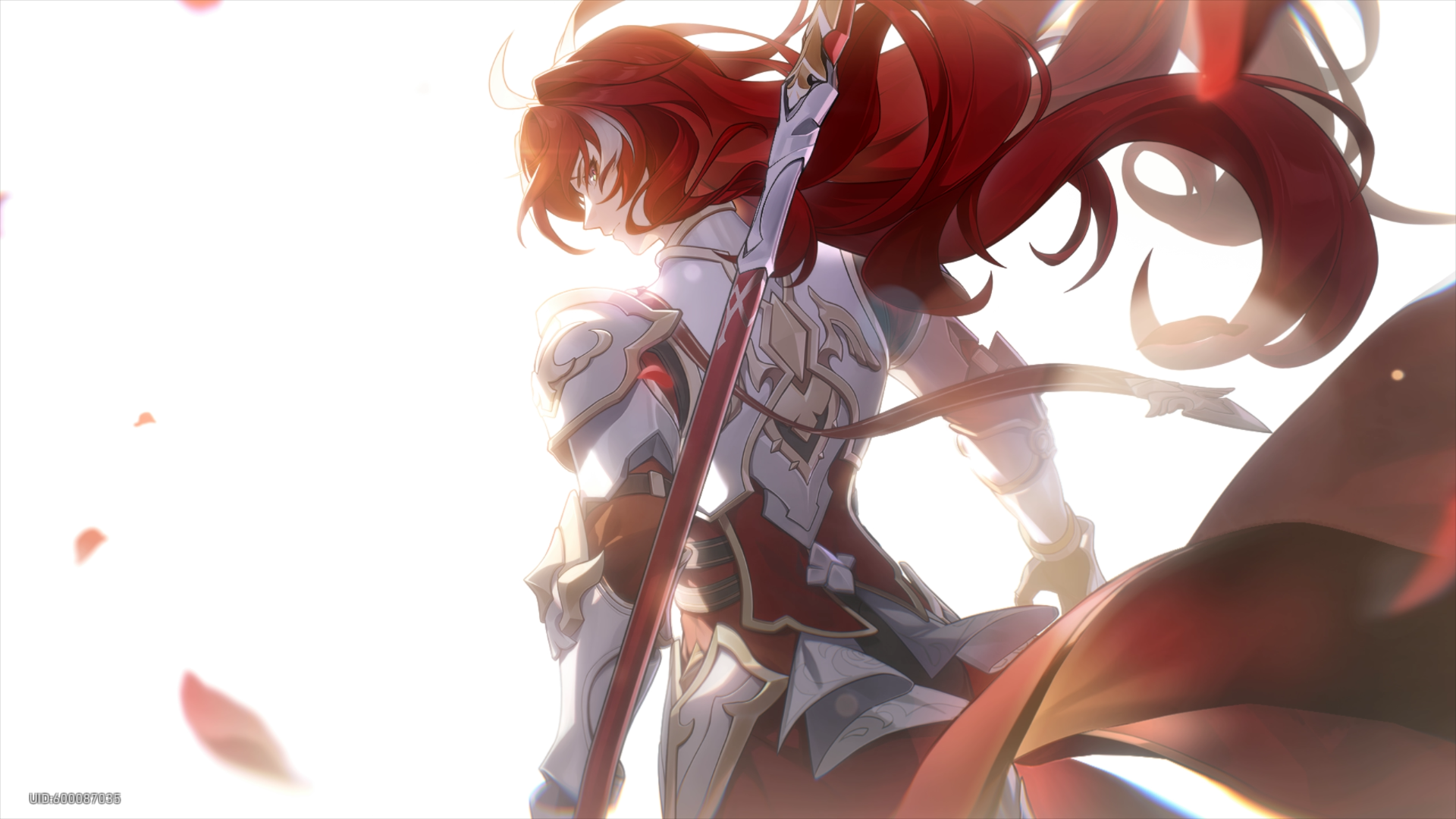
So in conclusion, do I recommend Honkai: Star Rail? Not really, if I’m being honest. Even if the game can’t get your money it is certainly going to demand a lot of time before it gets really fun, and I could forgive that if the story on offer helped make the journey there more palatable. Unfortunately it peaks way too early. As someone with a built-up account who can afford to mess around and take breaks, I enjoy the game as a nice evening wind-down activity, and occasionally there will be an update with story and gameplay so good that I get hooked for weeks. Not to mention the fact that the game has gotten me to reflect on spiritual and philosophical matters as often as it has makes me genuinely look forward to where it all goes next, even if only to dunk on it like a cheeky gadfly. Unfortunately unless you’re in a position to research the game’s systems and dedicate steady time to it, I’d honestly say dropping money on a fully-featured game is the smarter move. And while I respect the game’s ability to be played by those who otherwise can’t afford to invest disposable income into the hobby, I can ultimately only recommend it to those mature and virtuous enough to avoid falling for some of its more egregious monetization practices, for the scary thing about whales is that not all of them are actually wealthy. It’s too bad this space adventure didn’t quite reach its full potential, but perhaps if the Astral Express manages to blaze a greater trail in the future and the dev team keeps finding ways to improve upon its issues then it might be worth the hype someday.
Scoring: 76%
Gameplay: 3/5
Story: 2/5
Art and Presentation: 4/5
Music: 5/5
Replayability: 5/5
Morality/Parental Warnings
Honkai: Star Rail is a space-fantasy RPG which takes place in a setting with particular emphasis on its unique metaphysical cosmology. Of note are the Aeons, embodiments of concepts bound by their nature, who while technically not gods are more or less treated as such by those living in the universe. (They even have capitalized pronouns when being referenced, in very obnoxious all-caps LIKE THIS in fact.) Much of the game’s overarching narrative involves encounters with these beings. The term Aeon itself is a reference to a similar concept in Gnosticism. Some of the Aeons have names referencing deities from various mythology, such as Nanook and Qlipoth, and the name Nous is taken straight from Gnosticism. The game otherwise seems to run on an annihilationist eschatology of souls, although this may be expanded upon and changed later. The game broadly finds itself in modern pessimistic nihilist philosophizing, primarily in how it seems to treat free will as illusory, and also makes errors like depicting beauty as subjective and order as synonymous with tyranny. Battles within the game feature a variety of weapons brandished against space monsters and humans alike, but blood is notably absent.
Surprisingly there’s actually minimal reference to occult practice in the skillsets of the characters outside of the Xianzhou’s Divination Commission, though you could extend this designation to the Emanators of the Aeons if you interpret them as drawing power from their ‘god’. There is an upcoming character, Jade, who has heavy serpent in the garden imagery associated with her though. The character Blade is stricken with a cursed immortality which manifests a certain level of suicidal ideation in his behavior. Character design often leans into sexualization for both the men and women of its playable cast, but there are more modest characters in the mix than not. It should be noted that the Eidolon system which powers up characters when you get duplicates features visuals that get increasingly more intimate up until the final Eidolon which depicts most of the characters naked, but in fairness most of these pictures are from the neck up and don’t cross into anything explicit. While no characters are technically in a same-sex relationship there is some heavy-handed tension between Bronya and Seele, and the light cone Boundless Choreo also depicts a dance between Black Swan and Acheron. Foul language is mostly absent from the game’s script, with the exception of some hilarious diegetic censoring of Boothill. The game features micro-transactions, so be wary of reckless spending.
On a final note, some of the advertising for the game can feature additional sensitive content. While not technically part of the game itself, this advertising is sometimes linked in the game’s news tab. Of particular note is the Acheron animated short which details the dance she had with Black Swan, and Sparkle’s character trailer in which she repeatedly Persona 3-s herself (that is to say it has a lot of suicidal imagery, specifically in reference to Russian Roulette).
